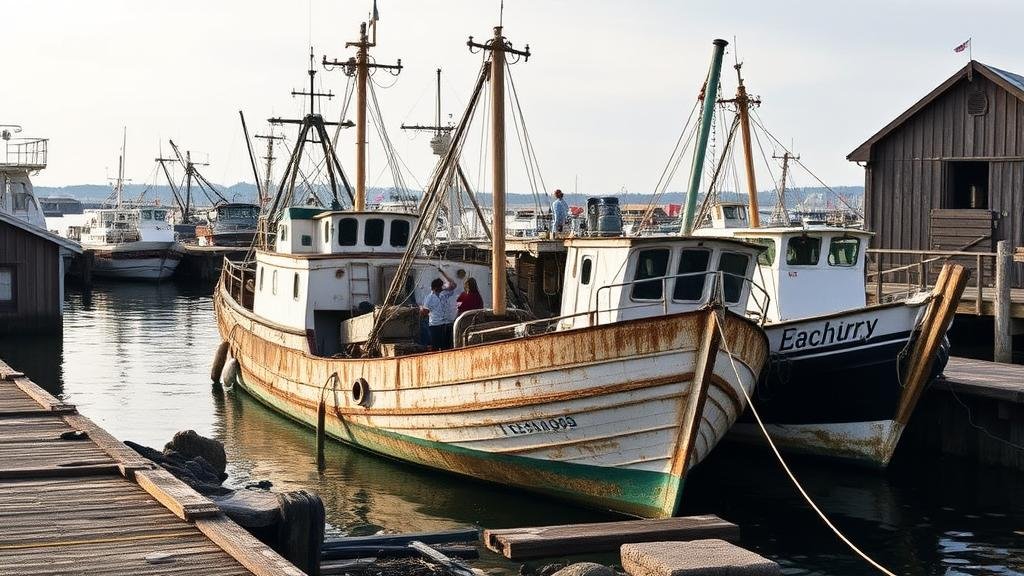Unearthing Maritime Relics in Forgotten Fishing Harbors
Unearthing Maritime Relics in Forgotten Fishing Harbors
The exploration of forgotten fishing harbors offers a unique window into maritime history, revealing the socio-economic dynamics and technological advancements of past fishing communities. These sites often serve as time capsules, containing relics that inform historians and archaeologists about the maritime practices and daily lives of coastal populations. In this article, we will examine the significance, methodologies, and case studies associated with unearthing maritime relics in these often-overlooked locations.
The Historical Significance of Forgotten Fishing Harbors
Fishing harbors have long been integral to human settlement and trade, providing necessary resources and enabling commerce with neighboring regions. As urban development intensified and transportation modes evolved, many fishing harbors were abandoned, leaving behind a wealth of cultural artifacts.
According to the United Nations Food and Agriculture Organization (FAO), approximately 50% of the worlds fisheries are located in coastal areas, which makes these harbors essential for understanding both historical and current fishery practices. Also, archaeological studies have shown that abandoned sites can yield insights into environmental changes, such as species population fluctuations and climate impacts on fishing practices.
Methodologies for Discovering Relics
The process of uncovering relics in forgotten fishing harbors involves a multidisciplinary approach, combining archaeology, marine biology, and historical research. Here are the key methodologies employed by researchers:
- Underwater Archaeology: This method involves divers surveying submerged wrecks and artifacts. Advanced technology such as sonar imaging allows for mapping of harbor layouts and the underwater terrain.
- Historical Research: Reviewing archival documents, such as shipping logs, maps, and local histories, helps researchers situate harbors within broader economic and social contexts.
- Public Engagement: Involving local communities in the research process often yields valuable oral histories and firsthand accounts, enriching the archaeological narrative.
Case Studies of Maritime Relics
Several potent examples illustrate the rich potential of forgotten fishing harbors as sites of archaeological inquiry:
The Port of Bones, United Kingdom
Known for its ancient boat remains dating back to the 14th century, the Port of Bones provides a glimpse into medieval fishing practices. Researchers discovered wooden fishing boats embedded in sediment, showcasing construction techniques that reflect the maritime technology of the time. Radiocarbon dating has estimated the boats to be over 600 years old, making them invaluable to understanding pre-industrial fishing methods.
Garibaldi Harbor, British Columbia
Garibaldi Harbor, once a bustling fishing hub, was abandoned in the mid-1900s. Recent underwater surveys revealed the remnants of fish traps, nets, and other equipment. Notably, some artifacts displayed evidence of indigenous fishing practices, which are crucial for understanding the areas pre-colonial history. The artifacts have been instrumental in fostering dialogue about sustainable fishing practices among contemporary fishing communities.
Challenges in Unearthing Relics
While the potential for discovering maritime relics is significant, several challenges impede research efforts:
- Environmental Factors: Sedimentation, marine growth, and pollution can negatively impact the preservation of artifacts.
- Regulatory Hurdles: Navigating local and national laws regarding underwater exploration and excavation can complicate the research process.
- Funding and Resources: Archaeological projects often rely on grants and philanthropic support, making sustained research difficult.
Real-World Applications and Future Prospects
The study of maritime relics is not merely academic; it has tangible implications for modern fishery management, conservation policies, and historical preservation. For example, lessons learned from ancient fishing practices can inform contemporary sustainable fishing strategies, facilitating a better understanding of how to manage fish stocks responsibly.
Plus, involving local communities in research fosters a sense of ownership and responsibility over maritime heritage, potentially leading to enhanced conservation efforts. Initiatives that connect past practices with future sustainability are critical in promoting both cultural preservation and ecological resilience.
Conclusion: Actionable Takeaways
The examination of forgotten fishing harbors reveals invaluable insights into maritime history and present-day fisheries management. As more harbors are studied, collaborative efforts among researchers, historians, and local communities will be essential for successful preservation and understanding of these sites. To engage with this field:
- Support local archaeological initiatives and museums.
- Participate in community-driven historical projects.
- Advocate for sustainable fishing practices informed by historical data.
By unearthing the relics of our maritime past, we not only preserve history but also pave the way towards more sustainable futures.



